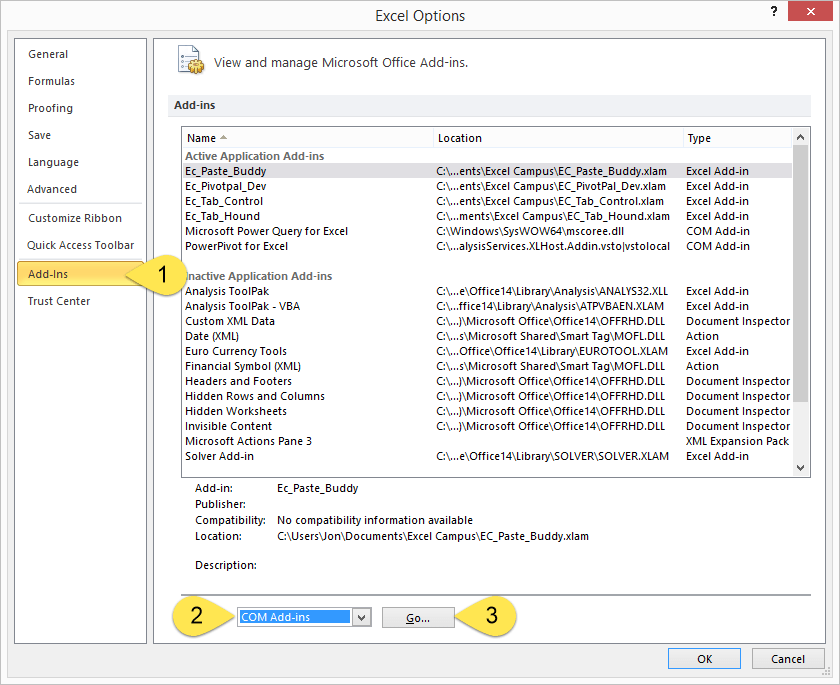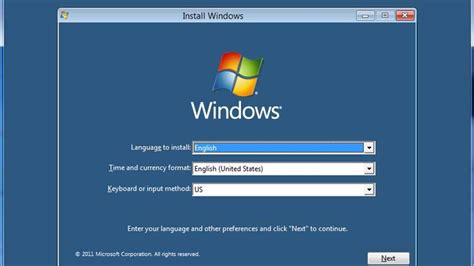


09-March-2020: We have recently released the beta version of OpenSolver 2.9.3. Free feel to read the release notes for the changes and new features added. Please let us know if they are any issues or problems that you have encountered by commenting on the bottom of the OpenSolver 2.9.3 post.
OpenSolver is updated whenever new features are added or bugs fixed. Please check out the blog page for release details. You can also use the built-in update checker to keep up-to-date with the latest release.
Add-ins.com has over 80 add-in products for Microsoft Excel. Many free products and trial versions. There are data, charting, time saving, and specialty add-ins that make Microsoft Excel easier to use. I have a.xlam add-in which gives users an additional ribbon in Excel with several macros. In the past, I have distributed these sorts of add-ins by saving the file to a saved network location, and asking the users to follow 5/6 simple steps to install (Excel Options Add-ins Find the file and select OK). Source: Tableau 7.xlam OLE, VBA macro line: Set f = fs.Creat eTextFile( fName, Tru e) Document contains an embedded VBA with functions possibly related to ADO stream file operations. How can I call a VBA macro that is contained in the active workbook (xlsm) from an add-in (xlam)? I do not know the name of the workbook (there are many of them), but I know the active workbook contains the macro/sub I want to run.
OpenSolver comes in two versions, a simpler “linear” version and an “advanced” (non-linear) version with support for more solvers, including non-linear solvers. Both versions are available for Mac and Windows. On Windows, OpenSolver should work with Excel 2007 and later; we test it on 32 and 64 bit Windows 7/10 in Excel 2010/2013/2016. (Older versions worked with Excel 2003, but we don’t test this any more.) On Mac OS X, it should work using Excel for Mac 2011 with any version of OS X newer than 10.7.
OpenSolver for Mac: OpenSolver currently has limited support for Excel 2016 for Mac. Version 2.8.3 of OpenSolver includes initial support for Excel 2016 for Mac, and supports model creation and modification, as well as solving with the CBC and Gurobi solvers. Make sure your version of Excel 2016 is at least 15.28 for this to work. Unfortunately, the late 2018 release of Excel 16.16.7 has broken OpenSolver; if you can help us debug this, please email us at email hidden; JavaScript is required. However, our user Alexander reported in April 2019 that “OpenSolver works for MacOS HighSierra with the latest Excel update 16.24, but if you upgrade your OS to Mojave it no longer works.” (Thanks, Alexander.)
Windows July 2016 Office Security Update Microsoft updated the security requirements for add-ins in July 2016. You now need to “Unblock” the .zip file before extracting the files; please see the instructions below and this help item.
Available Downloads
OpenSolver Linear: This is the simpler version that solves linear models using the COIN-OR CBC optimization engine, with the option of using Gurobi if you have a license. Most people use this version.
OpenSolver Advanced (Non-Linear): As well as the linear solvers, this version includes various non-linear solvers and support for solving models in the cloud using NEOS; more info is here. Much of this code is still new and experimental, and so may not work for you.
You can see all our downloads, including previous versions, on our Open Solver Source Forge site.
To download and use OpenSolver:
- Download the OpenSolver Linear zip file (either Mac or Windows, selected automatically depending on the machine you are using to visit this page). You can also try out our experimental Advanced Non-linear OpenSolver for Windows (also available for Mac) for access to non-linear solvers.
- Right click the downloaded zip file, choose Properties, and click the “Unblock” button or checkbox. If you don’t see this button (or an equivalent checkbox), you can skip this step. (This step is a new requirement following a July 2016 update to Excel.)
Close the Properties window. - Extract the files to a convenient location. (All files and sub-folders, including OpenSolver.xlam, must stay together; please do not move any files or folders out of the unzipped OpenSolver folder.) OpenSolver on Windows may not work if installed to an unmapped directory such as servermyfiles or one that contains unicode characters.
- Double click on OpenSolver.xlam. There may then be a small wait as Excel checks the digital signature on the OpenSolver code.
- If asked in an Excel Security Notice, give Excel permissions to enable the OpenSolver macros. You can click Trust all from Publisher if you do not want to be shown the Excel Security Notice again.
- The OpenSolver commands will then appear under Excel’s Data tab on Windows, or in the Menu Bar on a Mac.
- If using Excel for Mac 2016, follow the instructions further down the page to set up the solvers
- OpenSolver relies on open source solvers developed by COIN-OR; please consider donating to COIN-OR.
Signed Code: Note that as of October 2014, the OpenSolver code is signed by the publisher “The University of Auckland”. This makes the code more secure. However, Excel will occasionally need to check the digital signature by contacting servers online, which can take a few seconds.
Support our Solver Community: OpenSolver includes open source solvers developed by COIN-OR. Without these, OpenSolver would not exist. Please support our solver developers by donating to COIN-OR.
Make OpenSolver Installation Permanent: OpenSolver will be available until you quit Excel. If you wish, there are two ways you can make OpenSolver permanently available in Excel. Either, use OpenSolver… About OpenSolver…. and check “Load OpenSolver when Excel starts”, or you can copy the files from the .zip into the Excel add-in directory. This is typically:
Windows XP:C:Documents and Settings'user name'Application DataMicrosoftAddins

Windows Vista and later (7, 8, 8.1):C:Users'user name'AppDataRoamingMicrosoftAddins
Cloud Lamp Diy
Mac OSX:/Applications/Microsoft Office 2011/Office/Add-Ins
The Excel Solver is a product developed by Frontline Systems for Microsoft. OpenSolver has no affiliation with, nor is recommended by, Microsoft or Frontline Systems. All trademark terms are the property of their respective owners.
Installing Solvers on Excel for Mac 2016
Cloud Lampshade

If you are running Excel 2016 on Mac, you need to install the solvers after unzipping OpenSolver. Inside the unzipped folder, go to Solvers/osx you will find a file called “OpenSolver Solvers.pkg”. Open this file and click through the prompt to set up the solvers on your computer (you will need to enter the administrator password to do so). After this you will be able to use OpenSolver as normal.
Using Gurobi on Excel for Mac 2016
Cloud.xlam File
Because of the sandbox, Gurobi is unable to find its license file when we start it from OpenSolver. This can be fixed by copying the license file “gurobi.lic” (which usually is in your home folder) to the following folder:
Cloud.xlam Free Download
~/Library/Containers/com.microsoft.Excel/Data
Alternatively, you can open a terminal and paste the following command to put the license file in the right place (if your license file is in a non-default location you will need to modify this command first):
Cloud Slam
cp ~/gurobi.lic ~/Library/Containers/com.microsoft.Excel/Data
Why do we need an installer for Excel 2016 on Mac?
Cloud Lamb
Office for Mac 2016 is sandboxed, meaning that it can only run executables that are located in a set of whitelisted directories on the computer. We need to place the Solvers directory into one of these whitelisted locations so that we can run the solver binaries for OpenSolver. This folder is write-protected and needs admin privilege to modify, so we provide the installer to streamline the setup process.
